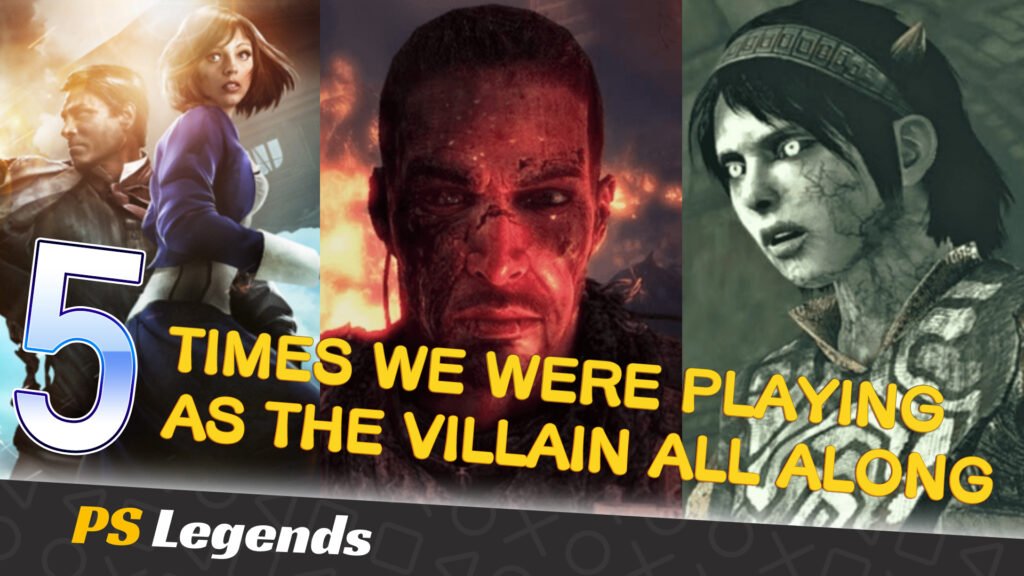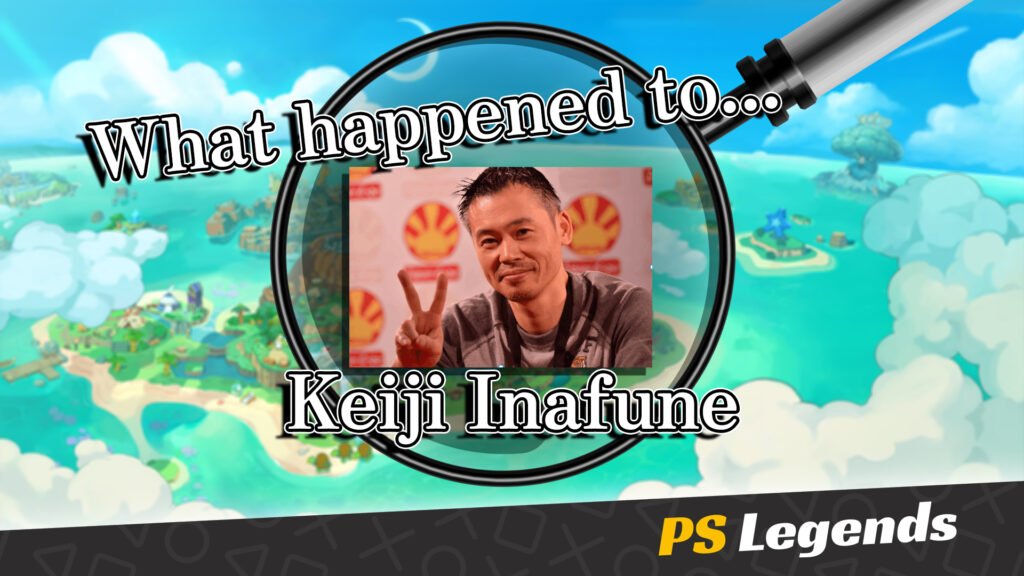In a case of surprising irony, our featured character today doesn’t actually represent the PlayStation brand, but has rather found her home on PS3, PS4 and Vita long before she spread her wings to other platforms. Neptune is instead a physical manifestation of Sega, once considered a rival to the original PlayStation. Now, both Neptune and Sega have found a new cause in uniting gamers from various backgrounds through their mutual love of games as a whole.
On This Page
Conception
In an interview with the character artist for the Hyperdimension Neptunia series, Tsunako, it is revealed that Neptune was not originally intended to be the main character. Tsunako was working with a different name and concept with the PlayStation-themed Noire serving as main protagonist and the three heroines being Noire, Blanc, and Vert. She was asked to draw a few other character samples and one which was very well received was Neptune’s original look. This led to the creation of Neptune as the new main protagonist.
Neptune’s original look was drawn with the idea of her namesake, the Roman god of the sea, Neptune, a bastardised version of the ancient Greek god Poseidon. Blue was the key colour, and according to Tsunako the look gave a mysterious impression. She states that she had used light blue as a luminescent colour before, but this time it had been taken over, blending into the pink hue of Neptune’s features which gives the feeling of everything being quite purple at first glance. This blend of blue and pink would fuse to make Neptune’s signature colour purple instead.
Neptune, also known as Purple Heart, would become the titular character of the Hyperdimension Neptunia franchise. She is the Console Patron Unit (CPU) of Planeptune, a nation which represents the Sega gaming brand. Originally, Neptune personified a fictional Sega console, although her name was inspired by the Sega Neptune, which combined the Sega Genesis/Mega Drive and 32X but was never released, cancelled by Sega in October 1995.

Neptune’s meaning, or rather the console she represents, is debatable between a fictional unreleased next-gen Sega console and the cancelled, unreleased Sega Neptune console, yet even these two possibilities have since been retconned by the release of Superdimension Neptune VS Sega Hard Girls in 2016, which provides a more in-depth look at each Sega-themed CPU character and what they represent.
With the main theme of the Sega Hard Girls franchise being Moe Anthropomorphism just like the Neptunia series, each Planeptune CPU (with the exception of the absent Uranus Caelus who is believed to represent the Sega Master System) is pitted against their Sega Hard Girls equivalent. Plutia would rival Mega Drive, Uzume would be Dreamcast, Nepgear is Gamegear, leaving Neptune to face off against her rival, Sega Saturn, the very console which replaced the cancelled Sega Neptune. Neptune’s meaning could theoretically change from game to game, and is still very much up for debate.
Due to the Neptunia series being games that revolve around different universes and dimensions, there are multiple Neptunes throughout the series, though all of them retain more or less the same personalities and core aspects regardless of the setting. Neptune also possesses some knowledge of her extra-dimensional counterparts and is aware of some of their misadventures. All English-speaking versions of Neptune have been expertly dubbed by the iconic voice of Melissa Fahn.

Story: Down But Never Out
Whether playing through the original Hyperdimension Neptunia’s ‘Superdimension’ reality or the ‘Hyperdimension’ universe featured in the mainline follow-ups, Neptune’s origin story begins in much the same way. Neptune faces off against the other three CPUs in a battle to determine who will be Gamindustri’s one true goddess. During the fight, she is singled out and attacked by Noire, Blanc, and Vert who deem her to be the most troublesome to fight out of the four of them. Outnumbered, Neptune, or ‘Purple Heart’ as she is known regally, is defeated, though being a goddess, she cannot be truly killed.
Instead, Neptune will usually fall from a structure above such as the divine realm of Celestia or the colossal Planeptune Tower and crash-land in her own nation of Planeptune. Neptune will repeat this historical event throughout the series, representing Sega’s downfall in the real-world ‘console war’. She is nursed back to health and supported by a circle of friends who will differ depending on which game is being played, including IF, Compa, Neptune’s sister Nepgear, and even an otherworldly Noire.

Neptune strives to rise to greatness once again with the help of her friends, though her own laziness, fourth-wall breaking sense of humour and occasional bouts of amnesia often hinder her progress. Neptune’s friendly nature would also see her relationships with Noire, Blanc and Vert evolve from enemies, to rivals, and finally into friends. As a united front, these four would form a quartet which would lead the ever-growing armies of Gamindustri against even greater new threats.
Relationships
Neptune has something of a mother-daughter relationship with the oracle Histoire. Histoire constantly worries and lectures Neptune about her role as a goddess while Neptune just ignores her and slacks off. Histoire wishes Neptune to take her role as CPU more seriously, though it seems that Histoire does trust Neptune to get the job done eventually.
With Nepgear being Neptune’s younger sister, of course she loves her very dearly. However, Neptune can be a bit inconsiderate of her sister’s feelings from time to time and also very needy due to her laziness. Though when things get serious she can step up and actually act like a big sister when needed. Nepgear tends to get depressed when separated from Neptune for too long, as shown in Hyperdimension Neptunia Victory. People often think Nepgear is the older sister due to how much she has to take care of Neptune, and also looks a bit older than her physically.

Neptune has accumulated a large entourage of close friends over the years, so much so that it is difficult to pinpoint who Neptune’s best friend is. Neptune is very close to Compa as they think on a similar ditzy wavelength which is probably why they get along so well. Neptune loves Compa’s cooking, saying she always makes the best meals and she also enjoys using her as a pillow for naps. Neptune is also very close to IF, and usually calls her “Iffy”. Despite Neptune and her goofy ways in contrast to IF’s more serious and sarcastic nature, the two manage to get along just fine.
Neptune has been shown to have a close relationship with Noire. It could be said that the two of them are best friends despite Noire’s ‘tsundere’ tendencies towards her. Neptune is often shown to be friendly with Noire; always teasing her and giving her nicknames like “Lonely Heart”. Neptune likes to poke fun at Noire for not really having any friends previously, or playfully tease her about her strong work ethic and fashion sense. In actuality, Neptune holds great respect for Lastation and its CPU. Though it’s now on much friendlier terms, there is still a sense of rivalry between the two.

Much like her relationship with Noire, Neptune has a very good relationship with Plutia and these two could also be considered best friends. She and Neptune possess very similar personalities which enables them to get along extremely well. They are both usually incredibly lazy, but Neptune’s upbeat and easy-going personality contrasts Plutia’s slower and dominating one, yet this never seems to come between them.
Neptune and Peashy are extremely close. Since Peashy was practically raised by Neptune due to her and the Ultradimension Compa and IF staying in the Planeptune Basilicom during the events of Hyperdimension Neptunia Victory, she considers Peashy to be a daughter figure. Neptune and Peashy have very similar personalities, though Peashy is less intelligent than Neptune due to her being so young. Neptune loves Peashy dearly, much as she does her own younger sister and loves playing with her.

Legacy
Neptune is an immortal goddess and, as such, does not age, though her hidden maturity would be reflected in her transformed state. However, there is a version of Neptune who is physically older, highlighting Sega’s evolution as a maturing developer. This other Neptune is first introduced in Megadimension Neptunia VII when exploring the Zero Dimension. Like the younger-looking Neptune, she has a bright and positive personality. Contrary to her mature look, she still displays some semblance of carefree innocence in her actions.
Older Neptune’s hobby is filling her specimen book, the ‘Nep-Note’, and travels to other dimensions in search of rare bugs for her collection with the unwilling assistance of the captured dimension-crossing antagonist, Croire. While still cheery and upbeat, Older Neptune looks and acts notably more mature than her childish counterpart. Older Neptune would gain the role of protagonist in recent entry Neptunia Game Maker R:Evolution.

Neptune would also make a number of cameo appearances in other games, sometimes as a playable guest character, while other times simply as an in-game poster or Easter Egg image insert. She can be found in numerous titles, not limited to Mugen Souls, Akiba’s Trip: Undead & Undressed, Mugen Souls Z, Monster Monpiece, Fairy Fencer F, MeiQ: Labyrinth of Death, Million Arthur, Gun Gun Pixies, Trillion: God of Destruction, Senran Kagura: Peach Beach Splash, and Azur Lane: Crosswave.


